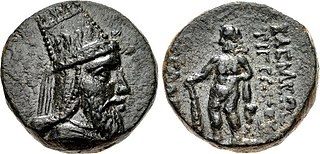
Artavasdes II was a King of the Kingdom of Armenia from 55 BC until 34 BC and a member of the Artaxiad Dynasty. He was a son of king Tigranes the Great of Armenia and Cleopatra of Pontus, his maternal grandfather was king Mithridates IV of Pontus. Artavasdes II was an ally of Rome and when Marcus Licinius Crassus the Roman proconsul of Syria prepared an invasion of the Parthian Empire Artavasdes offered his assistance. Crassus, not willing to share the glory and spoils of defeating the Parthians, refused Artavasdes offer. The Romans suffered an unexpected defeat at the hands of the Parthian general Surenas while Orodes II, the Parthian king, invaded Armenia and forced Artavasdes to join the Parthians, he gave his sister in marriage to Orodes' son and heir Pacorus.

Artabanus III of Parthia, flourished second half of 1st century BC – AD 38, was a Prince of Iranian and Greek ancestry. Artabanus III served as a King of Media Atropatene and later as King of Parthia.

Vonones II of Parthia was a Parthian prince who served as a King of Media Atropatene and briefly as King of the Parthian Empire.

Artaxias II, also known as Artaxes II and Artashes was a Prince of the Kingdom of Armenia and member of the Artaxiad Dynasty King of Armenia from 30 BC until 20 BC.
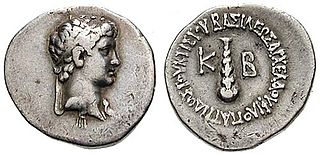
Archelaus was a Roman client prince and the last king of Cappadocia.
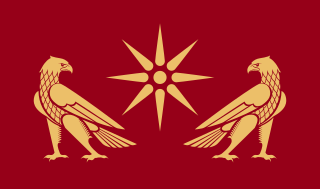
The Artaxiad dynasty or Ardaxiad dynasty ruled the Kingdom of Armenia from 189 BC until their overthrow by the Romans in AD 12. Their realm included Greater Armenia, Sophene and intermittently Lesser Armenia and parts of Mesopotamia. Their main enemies were the Romans, the Seleucids and the Parthians, against whom the Armenians had to conduct multiple wars.
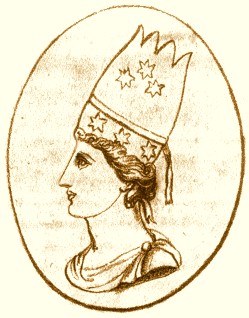
Erato also known as Queen Erato was a princess of the Kingdom of Armenia and member of the Artaxiad Dynasty. She served as Roman client queen of Armenia from 10 BC until 2 BC with her brother-husband King Tigranes IV. After living in political exile for a number of years, she co-ruled as Roman client queen of Armenia from 6 until 12 with the Herodian Prince Tigranes V, her distant paternal relative. As a queen of Armenia, she may be viewed as one of the last hereditary rulers of her nation.
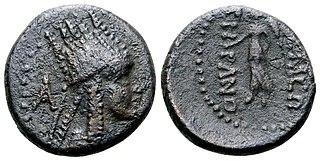
Tigranes III was a Prince of the Kingdom of Armenia and member of the Artaxiad Dynasty who served as a Roman Client King of Armenia
Tigranes VI, also known as Tigran VI or by his Roman name Gaius Julius Tigranes was a Herodian Prince and served as a Roman Client King of Armenia in the 1st century.

Tigranes IV was a Prince of the Kingdom of Armenia and member of the Artaxiad Dynasty who served as a Roman Client King of Armenia from 8 BC until 5 BC and 2 BC until 1 AD.

Artavasdes I of Media Atropatene, also known as Artavasdes I of Atropatene, Artavasdes I and Artavasdes was a Prince who served as a King of Media Atropatene. Artavasdes I was an enemy of King Artavasdes II of Armenia and his son Artaxias II. He was a contemporary with the Ptolemaic Greek Queen Cleopatra VII and Roman Triumvir Mark Antony, as Artavasdes I was mentioned in their diplomatic affairs.
Mithridates I of Media Atropatene, sometimes known as Mithridates I and Mithridates of Media was a King of Media Atropatene.
Ariobarzanes I of Media Atropatene, also known as Ariobarzanes I of Media, Ariobarzanes of Atropatene, Ariobarzanes I and Ariobarzanes was a Prince who served as a King of Media Atropatene.
Athenais was a Princess from the Kingdom of Commagene whom through marriage became a Queen of Media Atropatene and possibly of Sophene.
Asinnalus of Media Atropatene was a Prince who served as a King of Media Atropatene.
There is an incomplete list of governors of Azerbaijan, a region in northwestern Iran.





